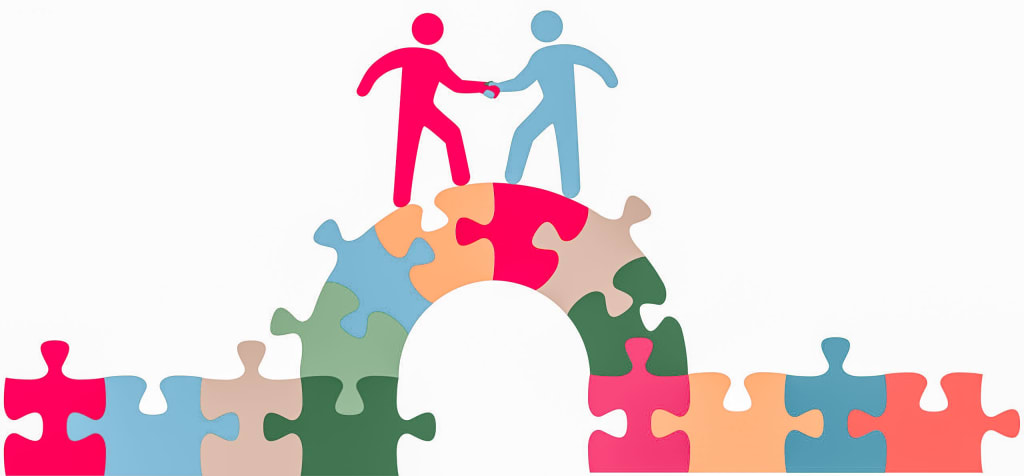Exploring Transnationalism and Diaspora Communities
Bridging Borders, Connecting Cultures

In today's increasingly interconnected world, the phenomena of transnationalism and diaspora communities play a vital role in shaping the global landscape of human migration, identity, and cultural exchange. From the movement of people across borders to the formation of vibrant diaspora communities, transnationalism transcends traditional notions of national identity and belonging, fostering new forms of connectivity and cultural hybridity. In this exploration, we delve into the intricate dynamics of transnationalism and diaspora communities, uncovering their profound impacts on individuals, societies, and the global human experience.
Understanding Transnationalism: Beyond Boundaries
Transnationalism refers to the process by which individuals and communities maintain multiple social, economic, and cultural connections across national borders. Unlike traditional notions of migration, which focus on the movement of people from one country to another, transnationalism emphasizes the fluidity and complexity of contemporary global mobility.
Transnationalism encompasses a wide range of practices and experiences, including transnational migration, diaspora formation, cross-border trade and investment, and the circulation of ideas, information, and cultural symbols. At its core, transnationalism challenges the notion of fixed national identities and highlights the interconnectedness of individuals and societies in an increasingly globalized world.
The Rise of Diaspora Communities: Navigating Identity in the Global Age
Diaspora communities, often born out of historical patterns of migration, displacement, and forced exile, are key manifestations of transnationalism. Diaspora communities consist of groups of people who share a common cultural or ethnic identity and maintain ties to their ancestral homeland while residing in other countries around the world.
Diaspora communities play a crucial role in preserving and transmitting cultural heritage, traditions, and languages across generations. They serve as centers of cultural exchange, where members of the diaspora engage in activities such as language classes, religious ceremonies, and cultural festivals to maintain connections to their roots.
Case Studies in Transnationalism: Examples of Global Mobility
The phenomenon of transnationalism can be observed in a wide range of contexts and communities around the world. For example, the Indian diaspora, which spans countries such as the United States, Canada, the United Kingdom, and the Gulf states, maintains strong ties to India through remittances, investments, and cultural exchange.
Similarly, the Chinese diaspora, with significant populations in countries across Southeast Asia, North America, and Europe, plays a prominent role in global trade, investment, and cultural exchange. Chinese communities abroad often maintain connections to their ancestral homeland through business networks, family ties, and cultural institutions.
Challenges and Opportunities in Transnationalism
While transnationalism offers opportunities for cultural exchange, economic development, and social innovation, it also presents challenges and complexities. For example, transnational migrants may face legal, social, and economic barriers in their host countries, such as discrimination, language barriers, and difficulties accessing healthcare and education.
Additionally, transnationalism can raise questions about identity, belonging, and cultural integration, as individuals navigate multiple cultural contexts and identities. Diaspora communities may struggle to maintain their cultural heritage and traditions while adapting to the cultural norms and practices of their host societies.
The Role of Technology in Transnationalism
Advances in technology, communication, and transportation have transformed the dynamics of transnationalism, making it easier for individuals and communities to maintain connections across borders. Social media platforms, messaging apps, and video conferencing tools enable transnational migrants to stay in touch with family and friends, participate in cultural events, and engage in political activism from afar.
Additionally, digital technologies have facilitated the emergence of virtual diaspora communities, where members of the diaspora can connect with each other online, share resources and information, and organize cultural and social activities. Virtual diaspora communities serve as digital hubs of cultural exchange, knowledge sharing, and solidarity, transcending geographical boundaries and fostering a sense of belonging among dispersed populations.
Conclusion: Embracing Diversity, Building Bridges
In conclusion, transnationalism and diaspora communities are central to the fabric of our interconnected world, bridging borders, connecting cultures, and enriching the global human experience. By embracing diversity, fostering dialogue, and building bridges across borders, we can harness the power of transnationalism to create a more inclusive, equitable, and interconnected world for all.
About the Creator
Mohamed Ali
Mohamed Ali is a passionate writer and researcher with a keen interest in exploring the complexities of human behavior and society through the lens of sociology. With a background in sociology and psychology.






Comments
There are no comments for this story
Be the first to respond and start the conversation.